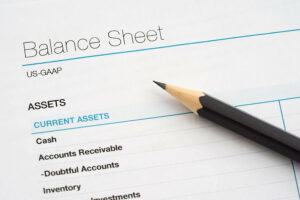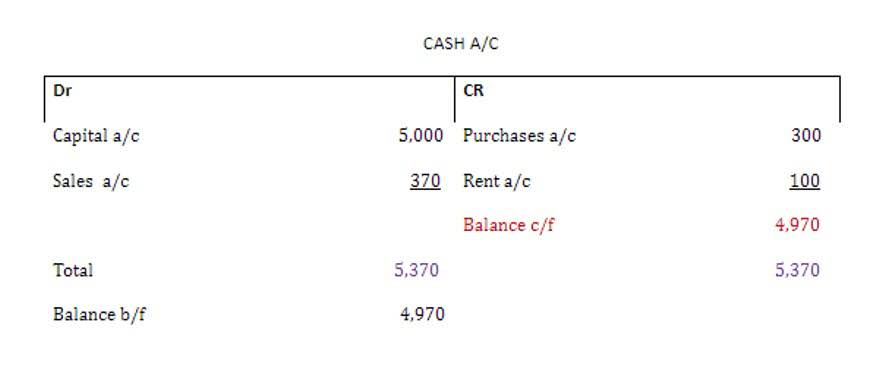Content

All Accounts Receivable represent valid obligations arising from products or services actually sold by Seller in the Ordinary Course of Business. The foregoing reserves are or will be adequate and calculated consistently with past practices. Reconciliations should be completed for all asset and liability object codes, based on the unit’s level of activity or business cycle. General guidelines dictate that if activity is posted monthly, the reconciliation is to be completed monthly. Please refer to the list of object codes that recommends the frequency of reconciliation for asset and liability object codes.
For example, in most cases, if a wine supplier sells a case of wine to a restaurant, it does not demand payment when it delivers the goods. Rather, it invoices the restaurant for the purchase to streamline the drop-off and make paying easier for the restaurant. A chart of accounts is simply a new GnuCash file in which you group your accounts to track your finances. In building this chart of accounts, the first task is to divide the items you want to track into the basic account types of accounting. It represents what is left over after you subtract your liabilities from your assets, so it is the portion of your assets that you own outright, without any debt. In GnuCash, use this type of account as the source of your opening bank balances, because these balances represent your beginning net worth. Track your individual stocks and bonds using this type of account.

In a way, you can consider equity as the business’s obligation to its owners. A business accumulates these obligations for several reasons. Define cash-flow liabilities and asset-related liabilities. Kristen has her Bachelor of Arts in Communication with certificates in finance, marketing, and graphic design. She is a small business contributing writer for a finance website, with prior management experience at a Fortune 100 company and experience as a web producer at a news station. She’s covered a variety of topics including news, business, entrepreneurship, music, and graphic design.
Free Financial Statements Cheat Sheet
The important thing here is that if your numbers are all up to date, all of your liabilities should be listed neatly under your balance sheet’s “liabilities” section. If you’ve promised to pay someone a sum of money in the future and haven’t paid them yet, that’s a liability. An online liability accounts rare book seller decides to open up a bricks-and-mortar store. He takes out a $500,000 mortgage on a small commercial space to open the shop. A dog walking business owner pays his ten dog walkers biweekly. An example of an expense would be your monthly business cell phone bill.
This means that it only pays for the work done by its employees from the 21st until the last day of a month on the following month. If a business has a not-so-good reputation, suppliers might not allow it to make purchases on credit. For example, the business pays for its rent every 5th day of the following month. Allowance for doubtful accounts represents the amount that the business expects to be uncollectible.
An expense is the cost of operations that a company incurs to generate revenue. Unlike assets and liabilities, expenses are related to revenue, and both are listed on a company’s income statement. The equation to calculate net income is revenues minus expenses.
Types Of Liabilities: Non
However, many countries also follow their own reporting standards, such as the GAAP in the U.S. or the RAP in Russia. Although the recognition and reporting of the liabilities comply with different accounting standards, the main principles are close to the IFRS. In addition, liabilities determine the company’s liquidity and capital structure. Financial statements are written records that convey the business activities and the financial performance of a company. Liability may also refer to the legal liability of a business or individual. For example, many businesses take out liability insurance in case a customer or employee sues them for negligence. The outstanding money that the restaurant owes to its wine supplier is considered a liability.
- Such facilities are utilized by small and medium enterprises.
- Issuing bonds is a technique used by corporations to raise finances through debt.
- In addition to income taxes, FICA requires a deduction from employees’ pay for federal social security and Medicare benefits programs.
- We’re firm believers in the Golden Rule, which is why editorial opinions are ours alone and have not been previously reviewed, approved, or endorsed by included advertisers.
- For example, machinery and equipment aid in the generation of revenue by facilitating the production of goods that the business will eventually sell.
- She has expertise in finance, investing, real estate, and world history.
Liabilities are financial obligations a business owes to other persons, businesses and governments. Short-term liabilities are financial obligations that become due within a year, while long-term liabilities are due in a year or longer. A company’s total liabilities is the sum of its short-term and long-term liabilities. Liabilities are reported on a company’s balance sheet along with its assets and owners’ equity.
Different Types Of Liabilities In Accounting
It’s still a liability because that money needs to be sent to the state at the end of the month. Long-term liabilities are crucial in determining a company’s long-term solvency. If companies cannot repay their long-term liabilities as they become due, the company will face a solvency crisis.

These taxes are collected by tax authorities from respective employers and paid for human welfare schemes, infrastructure development. Some of the examples of Liabilities are Accounts payable, Expenses payable, Salaries Payable, Interest payable. Although average debt ratios vary widely by industry, if you have a debt ratio of 40% or lower, you’re probably in the clear. If you have a debt ratio of 60% or higher, investors and lenders might see that as a sign that your business has too much debt. Unearned revenue is money received by an individual or company for a service or product that has yet to be provided or delivered.
How To Account For Liabilities
Though not used very often, there is a third category of liabilities that may be added to your balance sheet. Called contingent liabilities, this category is used to account for potential liabilities, such as lawsuits or equipment and product warranties. The best way to track both assets and liabilities is by using accounting software, which will help categorize liabilities properly.

A basic tenet of double-entry bookkeeping is that the total assets should equal the liabilities plus equity, i.e. the books should balance. Subtracting the liabilities form the assets reveals the net worth of the business.
Related To Excluded Liabilities
All such information is provided solely for convenience purposes only and all users thereof should be guided accordingly. Unlike shares, companies can maintain ownership and raise finances. Bob from Bob’s Donut Shoppe Inc takes out a $100,000 loan from a bank over 10 years. Regulations as to the recognition of liabilities are different all over the world, but are roughly similar to those of the IASB.
Use this type of account for all other loans, generally larger long-term loans such as a mortgage or vehicle loan. This account can help you keep track of how much you owe and how much you have already repaid. These represent the rights of your lenders to obtain repayment from you. Tracking the liability balances lets you know how much debt you have at a given point in time. Your liabilities could include a car loan, a student loan, a mortgage, your investment margin account, or anything else which you must pay back at some time. The information featured in this article is based on our best estimates of pricing, package details, contract stipulations, and service available at the time of writing.
What Is An Expense Account?
Save money without sacrificing features you need for your business. Interest payable makes up the amount of interest you owe to your lenders or vendors. Interest payable can include interest https://www.bookstime.com/ from bills as well as accrued interest from loans or leases. Many organizations elect to use a numbering system for their chart of accounts, assigning a reference number to each category.
- Tax liability, for example, can refer to the property taxes that a homeowner owes to the municipal government or the income tax he owes to the federal government.
- When you don’t pay off an expense immediately, it then becomes a liability on the balance sheet.
- Liabilities must be reported according to the accepted accounting principles.
- Hence, any dividends declared but not yet paid by the company are viewed as short term or current liabilities.
- Generally speaking, high APT means a company is struggling to find credit or simply not making effective use of the funds they do have.
Having a sound understanding of liabilities is pivotal for business success. The financial manager must have the right mix of liabilities. Too much or too little can have adverse impacts that may continue to haunt the company in the future. Companies experiencing cash flow problems can make use of liabilities to improve liquidity. Debt can also be obtained from a bank for less than a year. Notes payable are written promissory notes, whereby a lender lends a specific amount to a borrower.
Many industry associations publish recommended charts of accounts for their respective industries in order to establish a consistent standard of comparison among firms in their industry. Accounting software packages often come with a selection of predefined account charts for various types of businesses. A liability account tells us how much a business owes at any given time. A credit entry is used to increase liability account, whereas a debit entry is used to decrease liability account. Short-term liabilities are any debts that will be paid within a year. Your utility bill would be considered a short-term liability. Continually record liabilities as you incur or pay off debts.
Long-term liabilities are obligations that are due in a year or longer, while short-term liabilities come due within a year. Liabilities are reported on the company’s balance sheet and are also one of the three components of the basic accounting equation. In financial dealings, people and organizations often owe money, goods or services, known as liabilities. As obligations, these liabilities get settled or paid over time and are an essential part of a company’s financial accounting and balance sheet. In this article, we explore what liability means in financial accounting, which careers deal with liability, how liability relates to assets and the differences between current versus long-term liability. Long-term liabilities are the debts and obligations that are owed by the company but are not due to be paid within the current period.
We’re firm believers in the Golden Rule, which is why editorial opinions are ours alone and have not been previously reviewed, approved, or endorsed by included advertisers. Editorial content from The Ascent is separate from The Motley Fool editorial content and is created by a different analyst team. A capital lease refers to the leasing of equipment rather than purchasing the equipment for cash. Many or all of the products here are from our partners that pay us a commission.